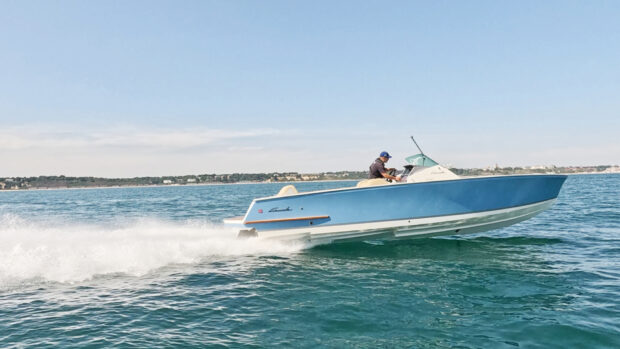Utterly essential but often forgotten and under-appreciated, fenders have the unenviable task of keeping your boat safe from contact with other vessels, pontoons or quay walls...
Correctly sized and positioned, boat fenders cushion the initial impact and dissipate the kinetic energy of your boat’s momentum, thereby avoiding costly damage to your own or other people’s craft.
The first task with all fenders is to attach them to the boat. Unless you have built-in fender buttons or use aftermarket clips, this usually involves tying the fender lines to a guardrail.
There are two boating knots I find suitable for this; the clove hitch, and the round turn and two half hitches. I always seem to find myself using clove hitches, as they are simple to do and easy to adjust.
However, they do have drawbacks, namely they are prone to slipping unless you add an extra locking hitch to make them secure for the longer term. A round turn and two half hitches is more secure and therefore better suited for occasions when you plan to leave the boat unattended.
They are also easier to tie when attaching them to the base of vertical stanchions, particularly when stretching up from the dock. There’s another good reason for doing this, as the lower the attachment point, the less stress they place on the guardrails.
Article continues below…

How to coil mooring lines: This simple method ends tangled rope frustration

How to tie 4 essential boating knots and when to use them
So, I usually tie them to the top of the guardrails when coming in to moor but then lower them to the stanchion bases before leaving the boat so they put less strain on the deck joints.
I am also a fan of having the fender closest to the stern hung off a deck cleat using a loop, as this allows for quick deployment and leaves more room on the cleat for stern lines and cross springs. It also means that it’s easy to grab if you need a ‘roving’ fender in a hurry.
The type of fender used is often dictated by how much room you have to stow them on board; cylindrical fenders are easier to stow in lockers and look neater when tied in a row on the stern.
Ball fenders, whilst a pain to stow, offer more protection for awkward stern quarters, and where the shape of the bow makes a vertical fender harder to deploy accurately. Being round, they are also very handy for pivoting the boat on or around to assist with exiting an awkward berth.
How you position your fenders is also vital. For coming onto a pontoon, I like them to be positioned with about a third of their length (around 6in/15cm) below the edge of the object they’ll be touching.
This allows them to roll a bit as you dock without being dislodged. Too high and they can pop out, too low and they can be pushed under the pontoon. For contact with quay walls, or if rafting onto another vessel, you want them to be protecting the widest point of the boat, usually the rubbing strake where the hull and topsides meet.
On a motorboat, the relatively square stern is often the most venerable spot, so position your biggest and best fender there. Then, I generally go for three more cylindrical fenders along the flat mid-sections of the topsides, with a ball fender just as the curve of the bow moves away from the dock.
The ball allows a slightly bolder approach when coming alongside without the aid of thrusters or IPS. They also make leaving with a wind-on situation easier as you can pivot around the ball fender and reverse away.
Lastly, keep them clean, as any dirt, grit or salt they collect will be ground into your hull, wearing away the polish and eventually the gelcoat, causing dull patches where the fenders have been hanging. Fender covers help but will need periodic washing to avoid the same fate.
First published in the January 2024 issue of MBY.










